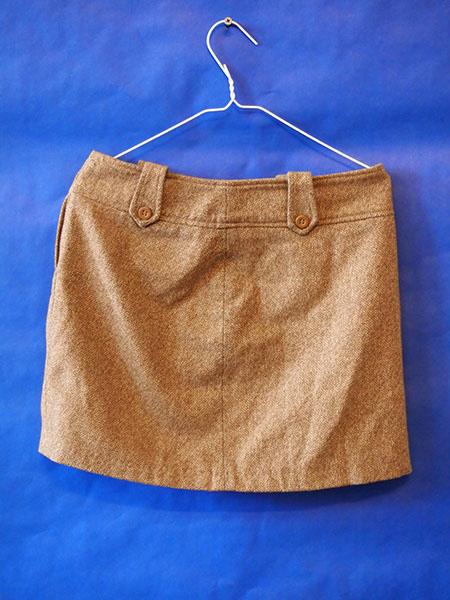![]() body | color | collections | commodity | cube | document | fabric | fetish | gender | glass | home | identity | living | machine | metal | minimal | mobility | narrative | olfactory | organic |
body | color | collections | commodity | cube | document | fabric | fetish | gender | glass | home | identity | living | machine | metal | minimal | mobility | narrative | olfactory | organic |
![]() pain | paper | plastic | plugs | power | protective | rectangular | ritual | round | sound | souvenir | spiritual | style | text-based | time | tool | touch | uniform | value | visual | warm | wood
pain | paper | plastic | plugs | power | protective | rectangular | ritual | round | sound | souvenir | spiritual | style | text-based | time | tool | touch | uniform | value | visual | warm | wood
| Clothing: Brown Mini Skirt | |||
Narrative: Hennes Made of wool from sheep, with a process that consists of: shearing; grading and sorting; grading and scouring; carding; spinning; weaving; and finishing. All of the byproducts are reused to make different grades of wool. Lanaset dyes are sold by several dye suppliers, including Paradise Fibers and PRO Chemical and Dye under their name of Sabraset. They are also sold under the brand name Telana. They are manufactured by Huntsman Textile Effects, which purchased the global Textile Effects business of Ciba Specialty Chemicals Inc. in 2006. They are acid dyes. Cellulose acetate fiber is one of the earliest synthetic fibers and is based on cotton or tree pulp cellulose ("biopolymers"). These "cellulosic fibers" have been replaced in many applications by cheaper petro-based fibers (nylon and polyester) in recent decades. The Federal Trade Commission definition for acetate fiber is "A manufactured fiber in which the fiber-forming substance is cellulose acetate. Where not less than 92 percent of the hydroxyl groups are acetylated, the term triacetate may be used as a generic description of the fiber." Acetate is derived from cellulose by deconstructing wood pulp into a purified fluffy white cellulose. After nearly 15 years of research first polyester fiber was developed in England known as Terylene in 1941. In 1946 American du Pont de Nemours and Co. purchased right to manufacture polyester in the United States nearly reversing fiber rations in the U.S. in the 1950’s. It’s development and usage in World War II brought the use of synthetic fibers during wartime up 10%. |
 |
||
![]()
